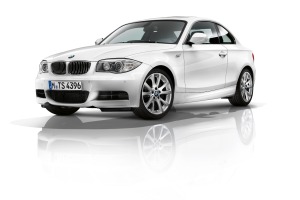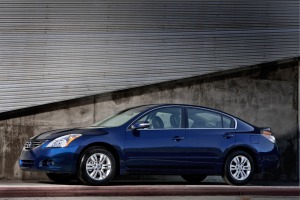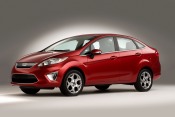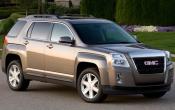- Save |
- Email |
- RSS |
- Newsletter
What You Should Know Before Buying a Sedan
Sedan Buying Guide | What You Should Know Before Buying a Sedan | View Other Buying Guides
Size/Market Segment
A sedan is a vehicle with four doors that features a traditional trunk design, though we have included four-door hatchbacks amongst our recommended choices. There are three basic sizes: compact, midsize and large (or full-size). Market segments include crossover, exotic, hybrid, luxury, performance and sport. Some models don't fit neatly into any one group.
Price
Compact sedans can range from $10,000 for an economy sedan to more than $40,000 for a luxury model. Midsize sedans start around $18,000 and top off in the $80K range. Large sedans run from the low-$20Ks for your typical family sedan to more than $300K for an exotic.
Engines/Fuel Economy
You'll see four-, five-, six-, eight- and even 12-cylinder engines in this group, as well as an all-electric car. An influx of new designs and technologies are improving fuel economy throughout the range of sedans, meaning that midsize sedans are getting the fuel economy that compacts used to achieve.
Safety
Family shoppers should check the availability of features like antilock brakes, front-seat side airbags, full-length side curtain airbags and stability control. Features like rearview cameras, parking sensors and knee airbags are becoming increasingly available on non-luxury sedans, while premium brands are utilizing high-tech electronics to warn inattentive drivers of blind-spot intrusion and impending collisions. Shoppers should be aware of crash-test scores as well, but it should be noted that the National Highway Traffic Safety Administration adopted more strenuous testing procedures for 2011, making the ratings of recently tested models incomparable to those tested in the past.
Luxury and Convenience Features
Luxuries like automatic climate control, heated seats, iPod interfaces, navigation systems, keyless start-up systems and Bluetooth capability can often be found in non-luxury sedans. Look for them as you shop. Keep an eye open for multiple seat adjustments and cupholders and plentiful storage provisions.
Passenger Capacity/Interior Space
Most compact and midsize sedans can transport four adults in reasonable comfort. Taller families and those with five to carry should consider a large sedan.
Luggage Capacity
Generally, compacts offer 12-13 cubic feet of trunk space; midsize sedans offer 14-16; and large sedans offer 17-21. If you'll be hauling anything bulky, get a sedan with folding rear seats or a ski pass-through. Those four-door vehicles with hatchbacks are the best choice for those who prioritize cargo space and versatility.
Do You Need All-Wheel Drive?
In general, consumers should only pay extra for AWD if they regularly drive in snow or otherwise slippery conditions. Keep in mind that the additional weight of AWD mechanicals often results in lower fuel economy. However, some sport sedans (from Acura and Audi, for instance) come with AWD for the sake of handling and stability during high-speed maneuvers.
Manual vs. Automatic Transmission
This used to be a simple section, but not anymore. While traditional manuals with clutch pedals are still recommended for sport sedans and underpowered compacts, there are now several different kinds of automatics. One is the traditional and most common "automatic transmission," which features a torque converter and can be shifted manually via the console shifter or wheel-mounted paddles. Automated manual transmissions used to be the stuff of exotic sports cars, but now they've found their way into economy cars for their ability to better maximize the potential of low-powered engines. While these types of transmissions make manual shifting more responsive, they can operate just like a normal automatic but shift quality is generally less smooth. Finally, there's the continuously variable transmission, which automatically selects from an infinite ratio to keep the engine in a sweet spot of power and/or fuel economy. A downside of this engine is an atypical constant droning noise during acceleration.
Operating Costs
Sedans are the standard by which all other vehicles are judged; although their price and size vary widely, buyers looking for low-cost transportation will inevitably end up with four doors and a trunk. Low-priced compact and midsize sedans are the cheapest to own; they don't use much gas, they don't cost a lot to insure and their lack of complexity keeps repair bills down. Luxury sedans may come with a limited free-maintenance plan, but expect higher costs as they age. Higher-performance sedans often cost more to insure and maintain.
More Information About Sedans
Advertisement
Advertisement




